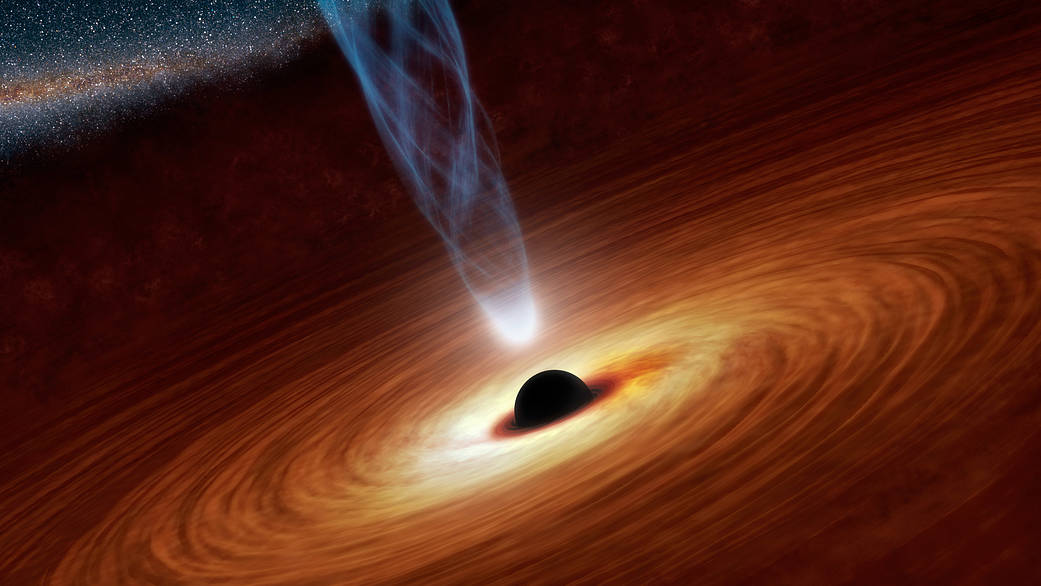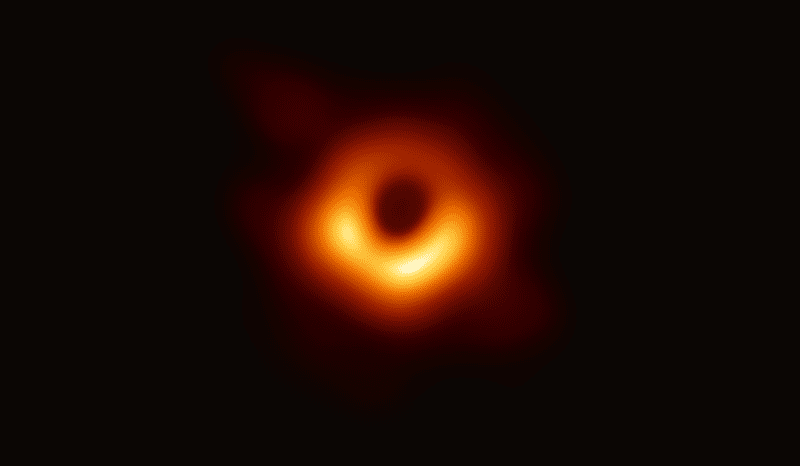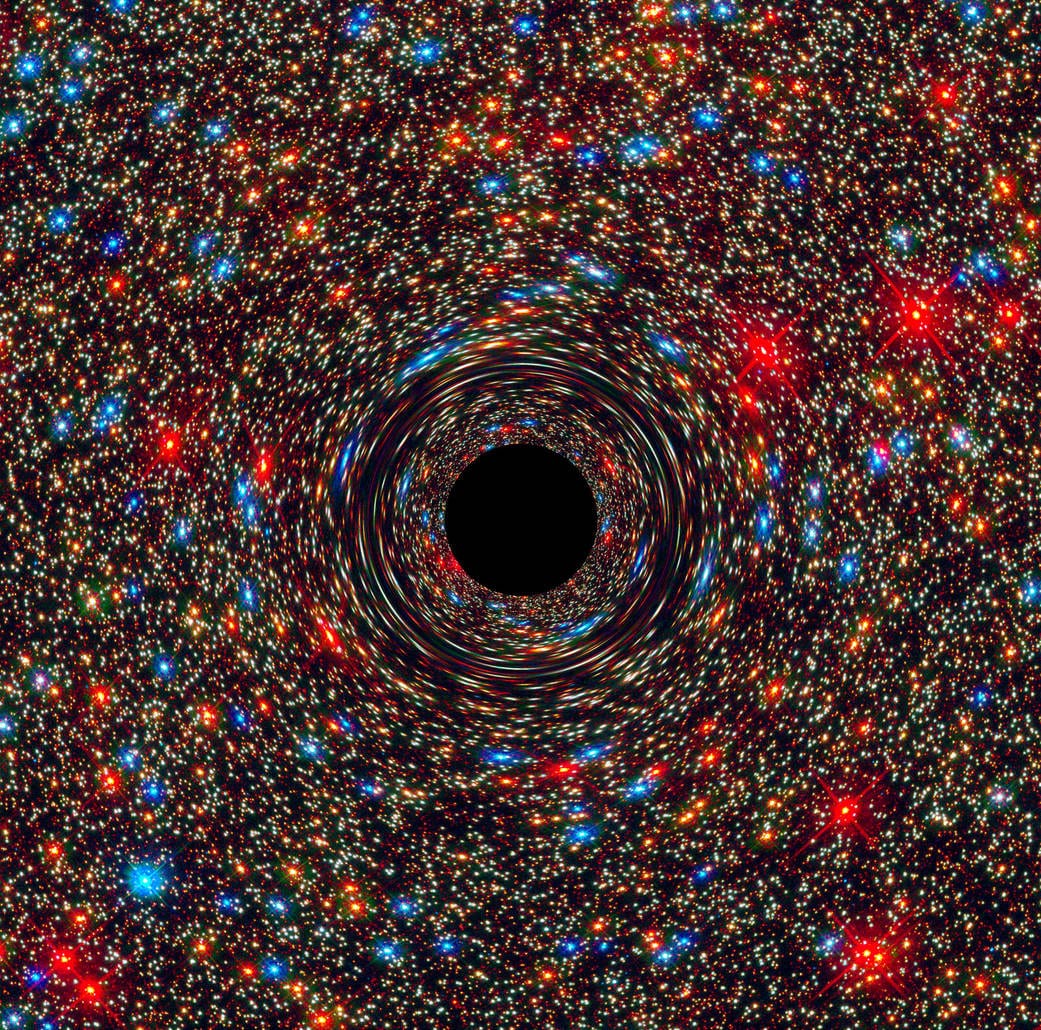Our Supermassive Black Hole Lit up the Milky Way. Is It Trying to Send Us a Message?
August 26th, 2019
by Ariel Tokarz

On May 13th, the black hole that dominates the center of our galaxy began to flicker like a candle on a birthday cake. Is it trying to tell us something?
In less than three hours, the dark behemoth had reached twice the brightness observed in measurements.
Astronomer Tuan Do and his team were lucky enough to watch the event as it occurred. They captured a time-lapse that shows the flux as it brightens to unprecedented levels.
Here's a timelapse of images over 2.5 hr from May from @keckobservatory of the supermassive black hole Sgr A*. The black hole is always variable, but this was the brightest we've seen in the infrared so far. It was probably even brighter before we started observing that night! pic.twitter.com/MwXioZ7twV
— Tuan Do (@quantumpenguin) August 11, 2019
Wait, There’s A Supermassive Black Hole In The Center Of Our Galaxy?
Supermassive black holes play a fundamental role in the formation of galaxies. The gravity of the black hole gathers interstellar gas responsible for powering galactic nuclei.
The jets of particles shooting at nearly the speed of light from near the event horizon of a black hole form stars and seeds solar systems. And the sheer mass and weight of a black hole keeps galaxies in place, spinning around them in an endless cosmic dance.

All black holes are formed by the collapse of a star, typically one million of times larger than our sun. They’re extremely dense objects with unimaginable gravity that nothing, not even light, can escape.
This means that scientists such as Do and his team observe the activity of stars and nebulae scattered around the event horizon, rather than the black hole itself.
The flux observed in May is part a familiar pattern this year. The brightness of our black hole, known as Sagittarius A* (Sgr A*), is varying more and reaching brighter levels than regularly observed in the past.
This latest occurrence might have been caused by gases disturbed by the star S0-2 when it passed close to the event horizon back in 2018.
Alternatively, it may be the effect of a possible delayed reaction from when the dust cloud G2 passed in 2014.
This Isn’t The Only Suppermasive Black Hole News This Year
Our galactic companion’s spike of activity is perhaps a plea for attention, after the groundbreaking photo of the black hole in the center of galaxy Messier 87 (M87) was revealed in April.
Like the flux being a spark of light seen outside the event horizon of Str A*, this image shows out a dark silhouette. The black hole is a spot of darkness within the disk of fast-moving gas and radiation it emits. The image is a milestone for advancing astrophysics.

This global endeavor was pieced together with many different telescopes observing at many different wavelengths, all staring at M87’s center at the same time. And the trouble was definitely worth it!
The image upholds Einstein’s theory of general relativity.
It is nearly circular and matches the size predicted by theory-informed simulations of what we think the black hole should be.

Why Haven’t We Imaged Our Own Supermassive Black Hole?
While observations are being made of Sgr A* – our galaxy’s supermassive black hole –, taking a similar image is much more difficult.
Sheperd Doeleman of Harvard University and the Harvard-Smithsonian Center for Astrophysics put it quite nicely in a statement in March. From our perspective, the event horizon of Sgr A*
is so small that it’s the equivalent of… being able to read the newspaper in Los Angeles while you’re sitting in New York City.
Another difficulty when trying to photograph Sgr A* is its tendency to brighten and dim over widely varying peaks over short timescales.
Sudden increases, like the flux observed in May, mean regularity in data is less common, and any image is more difficult to resolve.
Is Our Supermassive Black Hole Trying to Send Us a Message?
If the flare of light was in fact our black hole calling out to us from the darkness, we still have some communication issues to work out.
But interstellar observations are always important, whatever form they might take.
Observations made by astronomers like Do and his team and data collected by telescopes around the world bring us closer to a deep understanding of our universe, one flickering image at a time.
Further Reading
Vice. Our Galaxy’s Black Hole Suddenly Lit Up and Nobody Knows Why
[https://www.vice.com/en_us/article/pa7y4m/our-galaxys-black-hole-suddenly-lit-up-and-nobody-knows-why]
Space. First Black Hole Photo By Event Horizon Telescope
[https://www.space.com/first-black-hole-photo-by-event-horizon-telescope.html]
Cosmotography.com. Supermassive Black Holes Drive Galaxy Evolution
[https://www.cosmotography.com/images/supermassive_blackholes_drive_galaxy_evolution_2.html]
Want more science now?
Check out our news page where we post interesting studies and discussions (sometimes mocking them mercilessly) for more.
